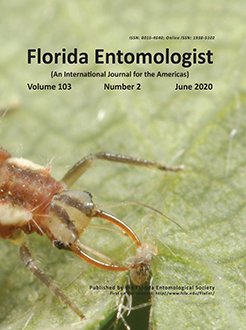Forest plantations, especially eucalyptus, increase wood supply, avoid deforestation of native plants, and preserve local biodiversity. Defoliating caterpillars often reduce the productivity of these plantations. Rearing and releasing pentatomid predators is a strategy to manage these pests biologically. In this study, the predators Brontocoris tabidus (Signoret) and Podisus nigrispinus (Dallas) (both Heteroptera: Pentatomidae) were evaluated in a clonal eucalyptus (Eucalyptus urophylla Blake × Eucalyptus grandis W. Hill ex Maiden) (both Myrtaceae) plantation. Brontocoris tabidus dispersed further than P. nigrispinus over the 7-d trial. Males of both species dispersed more than females, and most P. nigrispinus were found within 10 m from the release point, whereas the majority of B. tabidus were observed between 15 and 30 m from their initial position of release.
How to translate text using browser tools
10 July 2020
Dispersal of the Zoophytophagous Predator Brontocoris tabidus and Podisus nigrispinus (Heteroptera: Pentatomidae) in an Eucalyptus Plantation
Evaldo Martins Pires,
José Cola Zanuncio,
Roberta Martins Nogueira,
Marcus Alvarenga Soares,
Marco Antônio de Oliveira

Florida Entomologist
Vol. 103 • No. 2
June 2020
Vol. 103 • No. 2
June 2020
distance traveled
longer coverage
lower density
releasing technique




